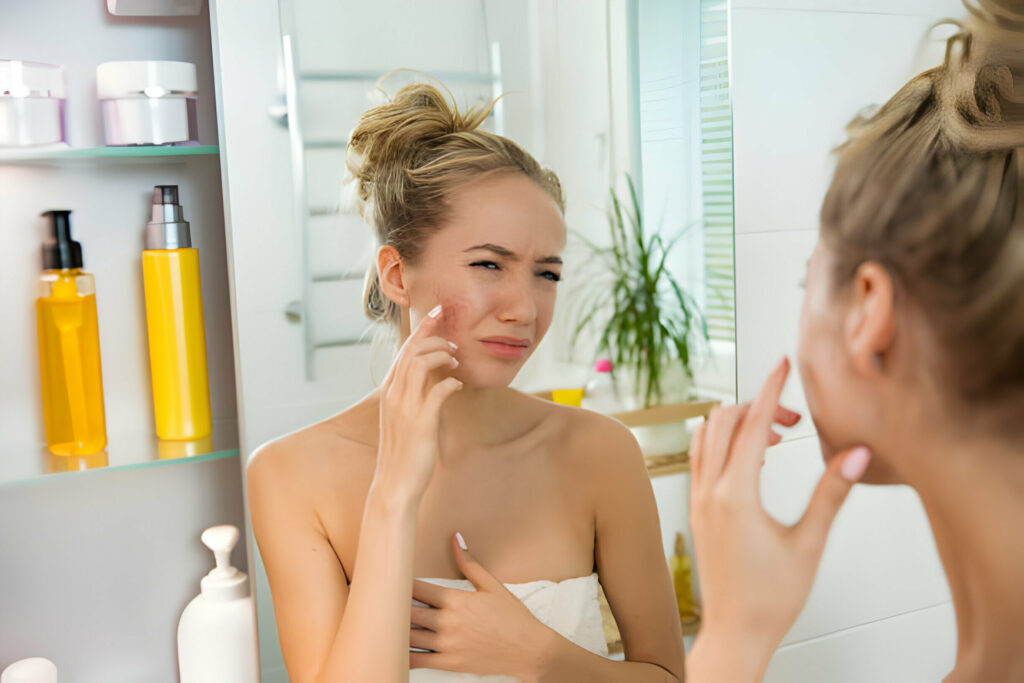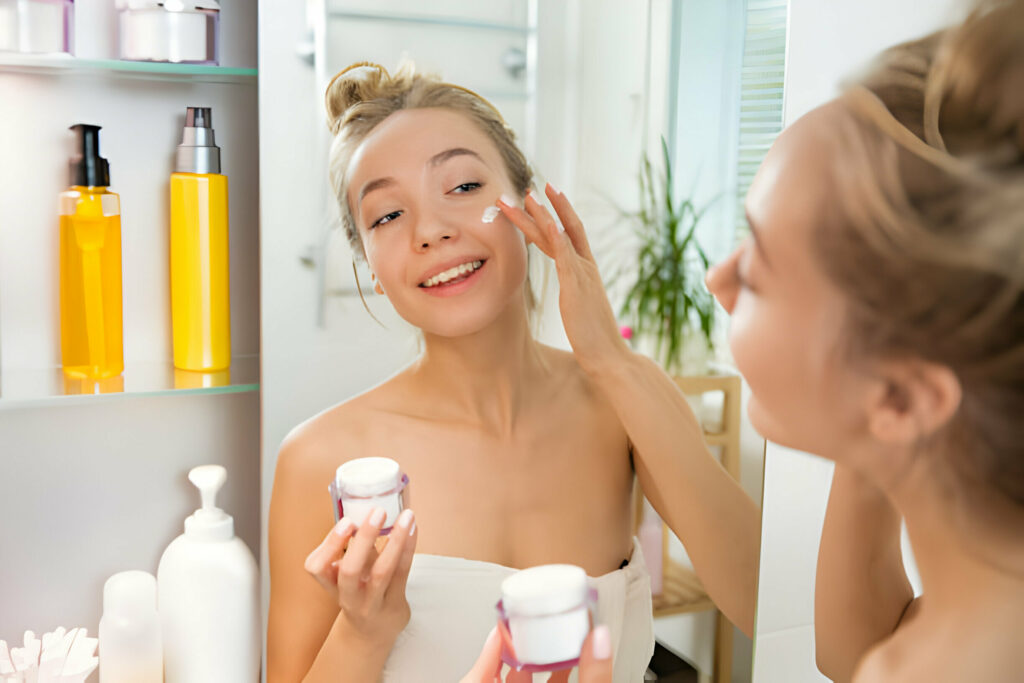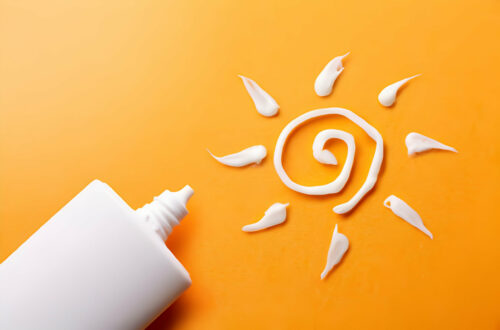“When your skin is dry, it means that your face cannot shield itself effectively from the surroundings. Dry skin develops small cracks on its outer layer, which disrupt its capacity to stay hydrated properly,” explains dermatologist Joshua Zeichner. Incorporating skin care for combination skin can help address both dry and oily areas effectively.
“Prepping your skin in the morning is crucial, especially if you have dry skin. This readies your skin for the day,” he adds. The ideal skincare routine for dry skin revolves around a common theme in dermatologists’ suggestions: using products that retain moisture and block harmful UV rays. Ahead, find the complete step-by-step skincare regimen for dry skin.”
Ingredients to Seek for Dry Skin “The finest moisturizing cream for dry skin will include a blend of emollients, humectants, and occlusives,” states Hartman. Emollients are substances applied to the skin that increase moisture within the skin’s barrier. Some common emollients are petrolatum, shea butter, and cocoa butter. Occlusives augment skin moisture and establish a physical barrier on the skin’s surface, preventing loss of hydration and sealing in added moisture. Common occlusives comprise beeswax, argan oil, jojoba oil, and mineral oil. Humectants function by drawing water from the air or deeper layers of the skin to enhance moisture within the skin’s barrier. Two widely used humectants are hyaluronic acid and glycerin.

Morning Skincare Routine Step One: Cleanser Without Foam. If there’s an aspect of our skincare regimen that has remained constant since childhood, it’s commencing the day with a clean face—literally. When it comes to cleansing, your choice of cleanser is pivotal. This is especially important in teenage skin care. ‘When you’re prepping naturally dry skin for the day, it’s essential to use a mild, non-foaming cleanser,’ advises Mack. Opt for one specifically crafted with hydrating elements. ‘These products eliminate dirt and oil without disturbing the outer skin layer, which can occur with some foaming cleansers,’ explains Zeichner.
Step Two: Vitamin C Serum Once you’ve cleansed your face, Mack suggests boosting your hydration even more. “I suggest using a vitamin C serum and then applying hyaluronic acid on top for an extra dose of moisture,” she advises. “Hyaluronic acid is a popular skin humectant that attracts water, helping to lessen the look of fine lines and wrinkles in the end.”

“Step Three: Moisturizer. While some people might find a moisturizing sunscreen sufficient for daily hydration, ‘if you have very dry skin, think about applying a moisturizer before using a sunscreen with an SPF of 30 or higher,’ suggests Mack. When you’re searching for a moisturizer, opt for lightweight ones that have ingredients to soften rough skin cells, attract moisture, and create a protective barrier on the skin’s surface, which is also essential in skin care for oily skin. ‘Skin oil and skin hydration are distinct concerns. You could have excess oiliness in the summer while still lacking hydration,’ he clarifies. ‘It’s packed with hyaluronic acid, which works like a sponge to draw in water… for hydrating and firming the skin,’ he adds.”
Extra tip:
Mack suggests putting on your skincare items right after you shower or bathe (to “keep the moisture in”), using a humidifier while you sleep, and making sure to drink at least 64 fluid ounces of water each day.

Step Four: Sunscreen is essential for all skin types, including dry skin. ‘UV light and pollution cause damage from free radicals, leading to premature aging,’ explains Zeichner. People with dry skin should seek sunscreens that not only protect but also help retain moisture. Incorporating skin care for sensitive skin is also important. ‘Instead of a regular sunscreen you’d use at the beach, if you have dry skin, go for a moisturizer with built-in sunscreen,’ suggests Zeichner.
To ensure proper protection, choose an SPF of 30 or higher (makeup with SPF isn’t enough), and remember to reapply every two hours.
Nighttime Skincare Routine. Step One: Cleansing Balm for Makeup and SPF Removal Start your evening routine by using a cleansing balm or micellar water to take off your makeup and SPF from the day.
Step Two: Gentle Cleanser for Hydration After cleansing, apply hydrating serums and products that can help you lock in moisture even better. Be cautious with choices that could counteract your efforts. “If your skin is very dry, avoid using vitamin A derivatives like retinoids and retinol. Instead, opt for a hyaluronic acid serum,” suggests Mack. “Combine it with a moisturizer that adds hydration.”
Extra tip:
Avoid excessive exfoliation. “If you notice flaky skin, your instinct might be to exfoliate, but it’s better to focus on giving your skin what it needs—hydration,” advises Zeichner. If you feel the need to exfoliate, go for a gentle exfoliant such as Tatcha’s Rice Enzyme Powder .
Step Three: Targeted Treatment Like Retinol or Spot Treatments If you’re using an “active” ingredient like retinol or benzoyl peroxide for breakouts, start with this after cleansing. To prevent irritation, wait around 20 minutes after cleansing and drying your face before applying your treatment. This way, your skin will be completely dry when you use your active products, reducing dryness and irritation.

Step Four: Hydrating Serum Like Hyaluronic Acid Although this step isn’t essential, dermatologists recommend it if your skin is consistently dry and lacking hydration. Once you’ve applied your retinol or other targeted active treatment, add a hydrating serum like hyaluronic acid to moisturize your skin. A tip: While it’s best to apply retinol on dry skin, hyaluronic acid works better when your skin is slightly damp. So, after using retinol, mist your face before applying the HA serum. If this seems complicated, you can either skip this step or apply your HA serum to dry skin—it will still provide some hydration.
Step Five: Moisturizer If your skin is dry, never skip moisturizer in your morning or nighttime routine. It’s especially important at night when your skin is in its rest and recovery phase. “For people with dry skin, I suggest using a thicker moisturizer cream rather than a lotion,” recommends Hartman. “A thicker cream usually contains more occlusives, which are crucial ingredients for dry skin. A cream also lasts longer on the skin, while a lotion may dry out quicker.”
Step Six (Optional): Face Oil As an option, you can finish your evening routine with a face oil. (Skip this if your skin is dry and prone to acne.) “Sealing in your moisturizer with a face oil isn’t always necessary, but it’s a nice extra step to make sure your moisturizer stays on the skin where it’s needed,” notes Hartman. “Only use a facial oil if you’ve already applied a moisturizer—your skin needs a product that adds hydration. Facial oil helps retain water content within the skin.”
Tips for a Dry Skin Routine Avoid Hot Water: While a hot shower or bath might feel good, it can harm dry skin. Contrary to the idea of added moisture, hot water can strip the skin’s natural oils, making dry or sensitive skin worse. Use warm water and apply hydrating products on damp skin. Save occlusive ingredients for the end, as they form a barrier that prevents other products from penetrating the skin. Apply Moisturizer to Damp Skin: Using moisturizer on slightly damp skin helps lock in moisture more effectively. Use a Sheet Mask Weekly: Using a hydrating sheet mask, once a week can deeply moisturize your skin. Be Cautious with Retinol: If you have dry skin, start slowly with retinol. “Use a retinol product 1-2 times a week for the first few weeks to let your skin adjust,” suggests Hartman. “Always use a moisturizer in both your morning routine (when you’re not using retinol) and at night, along with your retinol. This ‘retinol sandwich’ method can boost skin moisture and reduce retinol-related irritation, but it might also decrease the impact of the retinol.” To fully benefit from retinol without irritating your skin, apply it to completely dry skin (wait at least 20 minutes after washing your face). Avoid Alcohol-Based Products: ‘Stay away from anything containing alcohol, as it dries out the skin,’ warns Hartman. ‘I also don’t recommend moisturizers with astringents like witch hazel, as they can also dry out the skin.’ Incorporating a skin care routine for men can help men in selecting the right products.”





